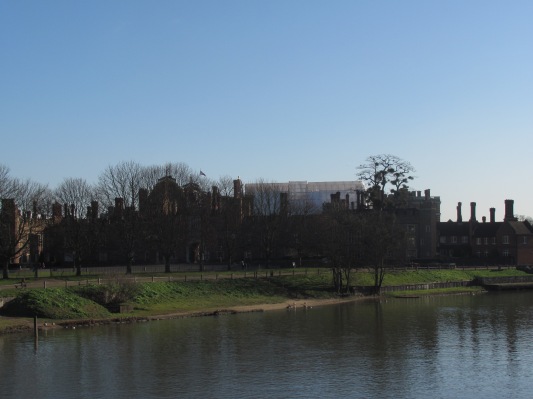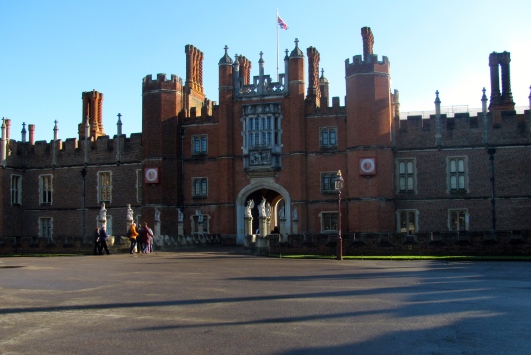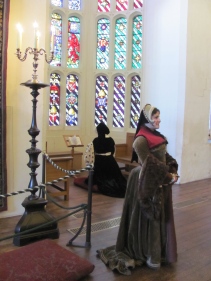
Ara Pacis from the side
We woke up to a beautiful, sunny Roman morning and headed over to the Hotel Mozart for the inclusive breakfast (colazione). There was a lovely spread of house-made pastries, fruit, eggs, quiche, cereal, coffee and juice. We like to generally ascribe to the Italian philosophy of a quick pastry and espresso for breakfast but haven’t been known to pass up a free meal… Plus, we needed to fuel up for our marathon day ahead and wanted to get off to a hearty start.
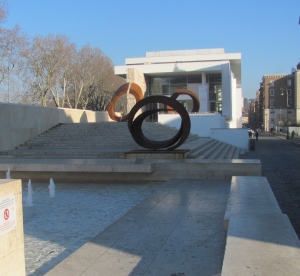
Ara Pacis from the front
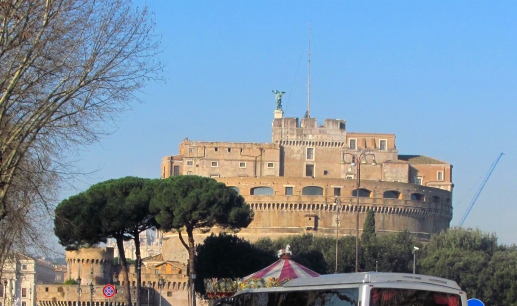
Castel Sant’Angelo
After leaving breakfast, we walked down the via di Ripetta, past the Ara Pacis, which is an altar dedicated to the Roman goddess of peace, Pax, and has now been enclosed and is a museum. We never went inside but passed by every day and night and felt that we could experience it fairly well without venturing in. We took the Ponte Cavour to cross over the Tiber River and turned left towards Vatican City.
We walked along the Tiber River (Fiume Tevere) until we reached the Castel Sant’Angelo. Because it was pretty early in the morning (9 am), vendors were just starting to set up and the buzz of people heading towards the Vatican began to pick up.
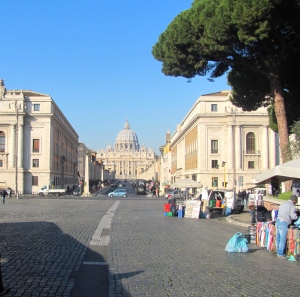
Once we arrived at the St. Peter’s Square, the enormity of the piazza and the gorgeous buildings it houses hit us, as it always does. There was already a line around the perimeter of the piazza that was probably at least 300 people long by that point. We queued up and took in my husband’s favorite location in Italy (actually, not Italy as Vatican City is its own country). We waited about an hour and went through security before being allowed into St. Peter’s Basilica.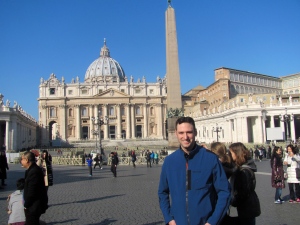 Last trip, we had explored the basilica pretty thoroughly and took the Scavi tour, which explores the underground tomb of St. Peter and the necropolis under the Vatican. This time, we decided to go up instead of down and planned to climb the dome (cupola) of the Basilica. There are two options: 1. Take an elevator halfway up and climb 200 steps to the top for €7 or 2. Climb from the beginning, which is 551 steps, for €5.
Last trip, we had explored the basilica pretty thoroughly and took the Scavi tour, which explores the underground tomb of St. Peter and the necropolis under the Vatican. This time, we decided to go up instead of down and planned to climb the dome (cupola) of the Basilica. There are two options: 1. Take an elevator halfway up and climb 200 steps to the top for €7 or 2. Climb from the beginning, which is 551 steps, for €5. 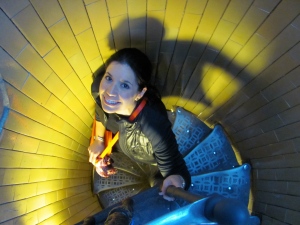 Fueled by our breakfast and enthusiasm for being in Rome, we chose the latter. This climb is definitely not for the faint of heart and even taking the elevator, there is still a pretty steep climb up. The weather was in the mid-50s, which was perfect. I don’t think I could have completed this climb in 90+ degree heat!
Fueled by our breakfast and enthusiasm for being in Rome, we chose the latter. This climb is definitely not for the faint of heart and even taking the elevator, there is still a pretty steep climb up. The weather was in the mid-50s, which was perfect. I don’t think I could have completed this climb in 90+ degree heat!
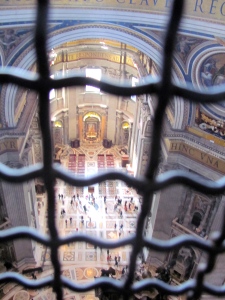
Interior of the Basilica

View over St. Peter’s Square
We finally made it up and the views were unparalleled, both of Rome and Vatican City but also of the nave of the interior of the Basilica.  On the way up, we took brief breaks to take in the view as we escalated the dome, and on the way down, we stopped at the gift shop around the mid-way point (there is also a cafe and restrooms) to purchase some rosary beads and other gifts for our family and friends.
On the way up, we took brief breaks to take in the view as we escalated the dome, and on the way down, we stopped at the gift shop around the mid-way point (there is also a cafe and restrooms) to purchase some rosary beads and other gifts for our family and friends. 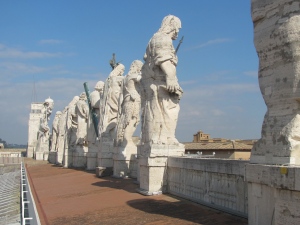 After we got back down to earth, we went into St. Peter’s Basilica and toured around again. The enormity of the basilica is breathtaking, regardless of how many times one visits.
After we got back down to earth, we went into St. Peter’s Basilica and toured around again. The enormity of the basilica is breathtaking, regardless of how many times one visits.
 We left the Vatican and began to head towards a local market that I had been wanting to check out, the Mercato Trionfale, which is located a few blocks north of the Vatican.
We left the Vatican and began to head towards a local market that I had been wanting to check out, the Mercato Trionfale, which is located a few blocks north of the Vatican.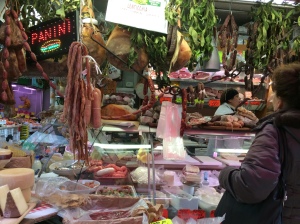
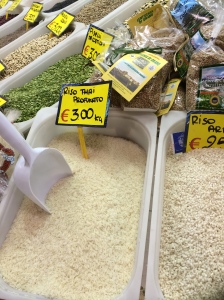
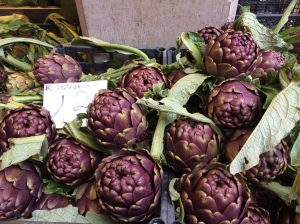 I had learned about this market from various blogs but especially from a Roman food blogger, Katie Parla. She writes a blog called parlafood, which also has an accompanying app that we ended up getting. The app works offline, which was helpful when trying to locate restaurants or even picking up a map of Rome. We stopped at multiple stalls and picked up fresh pasta, dried seasoning packets (we had no seasoning at the apartment), olive oil (both to cook with and to give as gifts), vegetables (onions, zucchini, zucchini flowers, fennel, avocado), and cheese (mozzarella and a hard block of Parmigiano-Reggiano).
I had learned about this market from various blogs but especially from a Roman food blogger, Katie Parla. She writes a blog called parlafood, which also has an accompanying app that we ended up getting. The app works offline, which was helpful when trying to locate restaurants or even picking up a map of Rome. We stopped at multiple stalls and picked up fresh pasta, dried seasoning packets (we had no seasoning at the apartment), olive oil (both to cook with and to give as gifts), vegetables (onions, zucchini, zucchini flowers, fennel, avocado), and cheese (mozzarella and a hard block of Parmigiano-Reggiano).
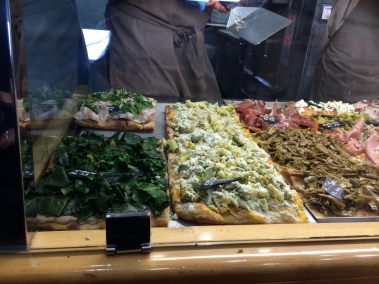
All of that shopping worked up our appetite, so we walked over to our planned lunch location, Pizzarium, a pizza by the slice (pizza al taglio) place owned by Gabriele Bonci and featured by Anthony Bourdain on his show, The Layover.
Katie Parla’s app helped us to navigate our way from the market over to the restaurant and we arrived to find a pretty small space with a line out the door. There were about four cooks taking orders and bringing fresh pizza from the oven to the display case. There are no signs explaining the types of pizza, so you either need to be adventurous and pick out what you want by sight or ask what types of pizza is available. 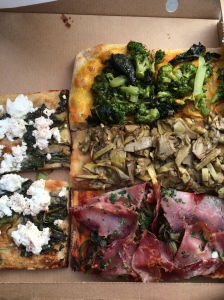 The person in front of us had asked so I listened while the choices were explained. The guys behind the counter were speaking French, Italian and English, so my head was spinning with trying to translate everything but we ended up being happy with our picks: broccoli/spinach/zucchini flower, mushroom, mortedella/arugula/tomato, and spinach/goat cheese.
The person in front of us had asked so I listened while the choices were explained. The guys behind the counter were speaking French, Italian and English, so my head was spinning with trying to translate everything but we ended up being happy with our picks: broccoli/spinach/zucchini flower, mushroom, mortedella/arugula/tomato, and spinach/goat cheese.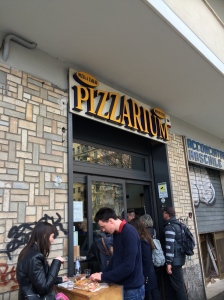
Be prepared not to sit inside, as there are no tables, or to grab one of the few tables outside. We decided to take our pizza across the street to the benches by the Cipro metro stop (which was kind of gross but we were starving). The pizza was good, not earth-shatteringly awesome, and it did the trick.
 We took the metro back to Spagna and for some reason, decided to walk more (I think we ultimately clocked 17 miles that day on my Fitbit tracker!), so we walked through the Piazza del Popolo and up stairs to the Borghese gardens. There is an overlook that gives a beautiful view of the Piazza del Popolo and you can see St. Peter’s rising up over the city in the background. After taking a few pictures and taking in the view, we headed back to the apartment to drop off our goods from the market. We stopped into our local supermercato (supermarket) just around the corner from the apartment to pick up a few extras that I didn’t get at the Mercato Trionfale (an amateur chef, the menu of how I could use the ingredients I picked up earlier on a whim was solidifying in my head and I needed some gorgonzola and balsamic. Needed it.). Tip: Whenever I am abroad (and I know I’ve said this before), I love going into local supermarkets or convenience stores to see what kind of snacks the locals enjoy. I have done this pretty much everywhere, but my favorite place to get snacks is Bangkok, Thailand, where my father’s side of the family lives. Whenever we visit, my brother and I go crazy buying Thai snacks to take home, though we usually eat most of them before we ever leave the country! It’s also a great place to buy gifts: I got my mom some Lipton tea that we can only find abroad and my brother some digestive aids (sort of like Alka Seltzer) that are not so easy to get stateside.
We took the metro back to Spagna and for some reason, decided to walk more (I think we ultimately clocked 17 miles that day on my Fitbit tracker!), so we walked through the Piazza del Popolo and up stairs to the Borghese gardens. There is an overlook that gives a beautiful view of the Piazza del Popolo and you can see St. Peter’s rising up over the city in the background. After taking a few pictures and taking in the view, we headed back to the apartment to drop off our goods from the market. We stopped into our local supermercato (supermarket) just around the corner from the apartment to pick up a few extras that I didn’t get at the Mercato Trionfale (an amateur chef, the menu of how I could use the ingredients I picked up earlier on a whim was solidifying in my head and I needed some gorgonzola and balsamic. Needed it.). Tip: Whenever I am abroad (and I know I’ve said this before), I love going into local supermarkets or convenience stores to see what kind of snacks the locals enjoy. I have done this pretty much everywhere, but my favorite place to get snacks is Bangkok, Thailand, where my father’s side of the family lives. Whenever we visit, my brother and I go crazy buying Thai snacks to take home, though we usually eat most of them before we ever leave the country! It’s also a great place to buy gifts: I got my mom some Lipton tea that we can only find abroad and my brother some digestive aids (sort of like Alka Seltzer) that are not so easy to get stateside.
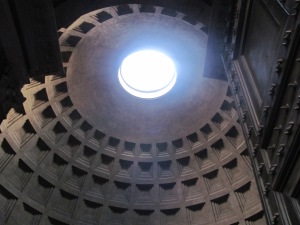
Oculus at the Pantheon
We rested our feet and took advantage of the free wi-fi in our room to check in with our pet sitter at home and our family, post a few Instagram shots, and then headed back out, rejuvenated. Next on our list was the Pantheon, which we were unable to enter the night before. We had been there before but wanted to check it out again. The dome is a feat of architecture for the time, and the oculus (open area in the center of the dome that lets the elements and light into the building) is just a very cool sight to behold. Even though our visit was in late February, the city was crowded and all of the attractions were full. We were hoping that being a little early in the season, we would avoid some crowds, but they were still everywhere.
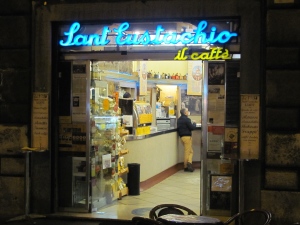 After leaving the Pantheon, we walked over to our favorite coffee place, il Caffe Sant’Eustachio. Many people also had the same idea to hit up a mid-afternoon caffeine buzz, so the caffe was pretty packed. Following protocol, we ordered our due grancaffe con lo zucchero (two of their specialty espressos with sugar) at the register, paid, then took our receipt to the counter and ordered our coffees there again.
After leaving the Pantheon, we walked over to our favorite coffee place, il Caffe Sant’Eustachio. Many people also had the same idea to hit up a mid-afternoon caffeine buzz, so the caffe was pretty packed. Following protocol, we ordered our due grancaffe con lo zucchero (two of their specialty espressos with sugar) at the register, paid, then took our receipt to the counter and ordered our coffees there again. 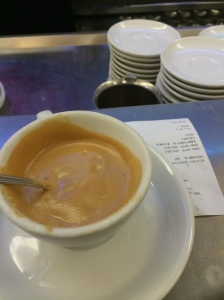
The barista made our creamy espresso (no milk but it is thick and as creamy as if it had milk) loaded with sugar. We downed these at the bar, then headed back out to the streets of Rome to continue our afternoon.
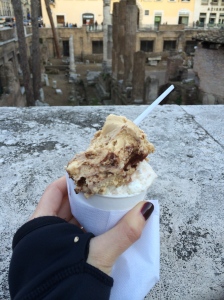
Next up, we walked over towards the Largo di Torre Argentina, the site of ruins where Julius Cesar was reportedly executed. More interestingly (to us, at least), it now houses a cat rescue sanctuary. Prior to our visit, we stopped at Vice a gelateria that we found with (guess what?) Katie Parla’s app. I asked the server for his recommendation and ended up with a chestnut flavor and tiramisu, both of which were delicious.
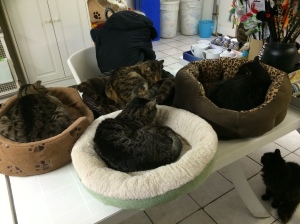
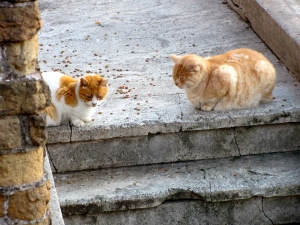
While digging into our gelato, we crossed the street to see the cats. We had viewed the cats from above during our last trip, but this time we wanted to visit the cat sanctuary. Being in the veterinary profession myself and having, um, five cats at home, we were excited to see what they were up to in Rome. Basically, cat rescue (and their associated ailments) knows no language and the people caring for the cats were sweet and welcoming. 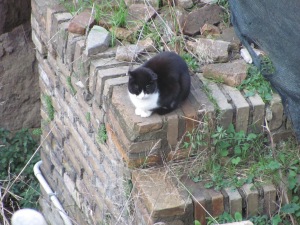 We purchased a few gifts for colleagues and friends, with the proceeds all going towards the rescue efforts. After getting our cat fix, we headed back upstairs to street level.
We purchased a few gifts for colleagues and friends, with the proceeds all going towards the rescue efforts. After getting our cat fix, we headed back upstairs to street level.
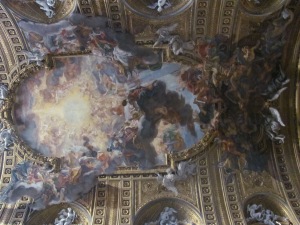
The Triumph of the Name of Jesus at Chiesa de Gesu
We walked to the Chiesa del Gesù, the mother church of the Jeusits. Since we went to a Jesuit university (Boston College), we were interested so we ventured inside for a view of the magnificent ceiling fresco, the Triumph of the Name of Jesus. That’s the thing about Rome: there is an amazing church on every corner, and save for St. Peter’s Basilica, generally it is free to enter and you can see masterpieces made by artists like Bernini and Michelangelo. Just be respectful and cognizant of hours of worship, but churches never disappoint in their splendor, whether you are religious or not.
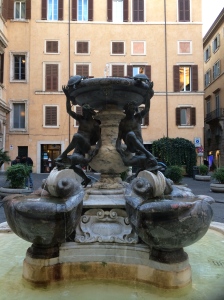
Turtle fountain
After exiting the church, we walked south towards the Jewish Ghetto. We found the Fontana delle Tartarughe (Turtle Fountain) and took a few minutes to enjoy it. 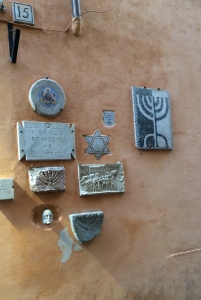
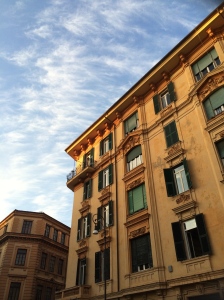
We walked through the Jewish Ghetto and did one of Rick Steves’ heritage walks. We did not end up going into the synagogue and its museum as it was near closing time so we continued on towards Trastevere, the neighborhood across the Tiber river. We walked through the streets of this old yet bustling neighborhood and took in its eclectic yet slightly hipster feel. Ultimately, we made our way up the colle di Gianicolo (Janicular Hill), one of Rome’s ‘seven’ (there are actually more than that) hills.
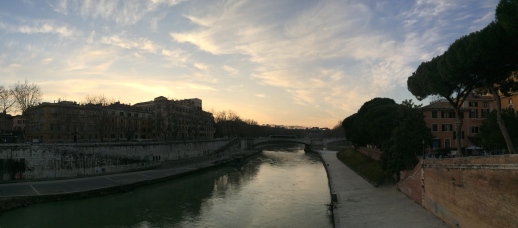
Sunset over the Tiber
The walk up was fairly steep and along a pretty busy road, which was a little scary with the narrow/nonexistent shoulder or sidewalk at dusk with Roman drivers. Ultimately, we ascended a flight of stairs and found ourselves in the courtyard of the Chiesa di San Pietro in Montorio.
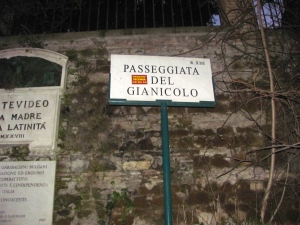 We were able to find the main road (via Garibaldi) and continued to the Passegiata del Gianicolo.
We were able to find the main road (via Garibaldi) and continued to the Passegiata del Gianicolo.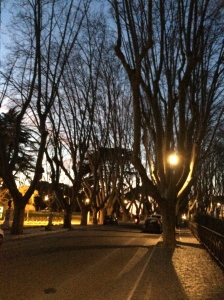
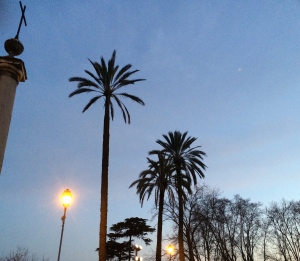 We followed that road to the pinnacle of the hill, the piazza Giuseppe Garibaldi. The view from this vantage point was unparalleled. The sun was setting as we crossed the Tiber earlier, but we got the last bits of light and saw the moon (and maybe Venus) from the top of the Gianicolo. We sat on a bench and got some well-deserved rest before heading back down to Trastevere.
We followed that road to the pinnacle of the hill, the piazza Giuseppe Garibaldi. The view from this vantage point was unparalleled. The sun was setting as we crossed the Tiber earlier, but we got the last bits of light and saw the moon (and maybe Venus) from the top of the Gianicolo. We sat on a bench and got some well-deserved rest before heading back down to Trastevere. 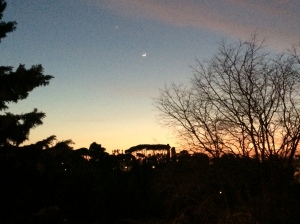
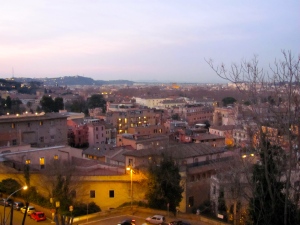

Thus began the marathon of trying to locate our apertivo location: Freni e Frizione. We had learned about this bar from both Anthony Bourdain and Zane Lamprey (on an episode of Chug). The location was not intuitive as the entrance is sort of hidden on the side of the building and we passed it maybe three times, at least. I’m sure that being exhausted, hungry, thirsty, and in a little pain from walking didn’t really help our navigation skills. Finally, we found it. The bar is a little too cool for itself: it is located along the Tiber in an old garage (hence the name, which means “brakes and clutches” in Italian). The deal is that, like many bars in Rome, if you go from 7pm – 10 pm the bar has a nice selection of snacks (I think most if not all of theirs are vegetarian, a nice change in Rome) for free if you have purchased a drink. The snacks are actually a pretty decent buffet of salads and hot pasta and bread and you can make a meal out of it (if you haven’t walked 17 miles all day and are starving…). We drank and ate and rested our feet before heading back out into the night.
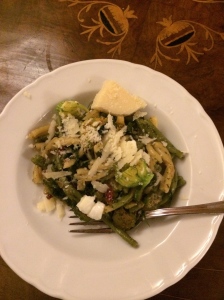 For dinner, we intended to go to a little mom-and-pop restaurant called Alfredo e Ada, but by the time we got back to the apartment to change, we were bone tired. I decided to cook using our goodies from the Mercato Trionfale from earlier in the day and made a pretty tasty pasta dish containing gemelli, asparagus, zucchini, sautéed zucchini flowers, parmigiano-reggiano, and a side salad of fennel, gorgonzola, balsamic, olive oil, red onion and avocado in our little kitchen.
For dinner, we intended to go to a little mom-and-pop restaurant called Alfredo e Ada, but by the time we got back to the apartment to change, we were bone tired. I decided to cook using our goodies from the Mercato Trionfale from earlier in the day and made a pretty tasty pasta dish containing gemelli, asparagus, zucchini, sautéed zucchini flowers, parmigiano-reggiano, and a side salad of fennel, gorgonzola, balsamic, olive oil, red onion and avocado in our little kitchen.

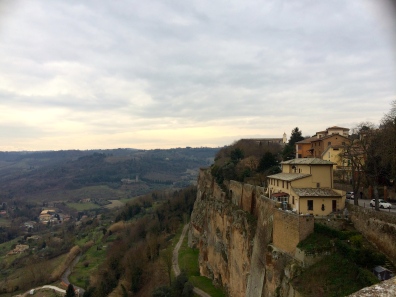 During our planning, we had wanted to take a side trip during our stay in Rome. Because we had visited prior and had seen many of the sights (the Colosseum, Vatican museums, millions of churches, the Forum), we wanted to expand our horizons and see a new town. We wanted to take a train (had flirted with the idea of renting a car but decided that driving in Rome wasn’t really for us, plus we didn’t want the hassle of picking up and returning a car) and wanted to be within two hours of Rome. We did some research, taking into account weather and distance as the biggest factors. Our next trip to Italy will definitely encompass the south/southwest (Positano, Capri, etc) but because we were traveling in late February, those destinations seemed to be off-season. We had considered visiting my great-grandparents’ hometowns, Chieti and Campobasso, but there were no direct trains to either place and we ultimately decided that an ancestral road trip is for another occasion. We wanted to find a place that was a walkable town with multiple sights to visit (if we wanted to) and several restaurant options. We had already visited Siena (highly recommended, one of my favorite cities) and Florence, which would have been good choices.
During our planning, we had wanted to take a side trip during our stay in Rome. Because we had visited prior and had seen many of the sights (the Colosseum, Vatican museums, millions of churches, the Forum), we wanted to expand our horizons and see a new town. We wanted to take a train (had flirted with the idea of renting a car but decided that driving in Rome wasn’t really for us, plus we didn’t want the hassle of picking up and returning a car) and wanted to be within two hours of Rome. We did some research, taking into account weather and distance as the biggest factors. Our next trip to Italy will definitely encompass the south/southwest (Positano, Capri, etc) but because we were traveling in late February, those destinations seemed to be off-season. We had considered visiting my great-grandparents’ hometowns, Chieti and Campobasso, but there were no direct trains to either place and we ultimately decided that an ancestral road trip is for another occasion. We wanted to find a place that was a walkable town with multiple sights to visit (if we wanted to) and several restaurant options. We had already visited Siena (highly recommended, one of my favorite cities) and Florence, which would have been good choices.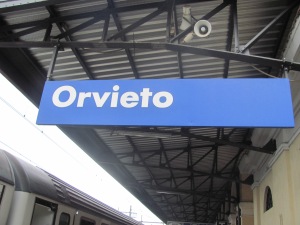 Ultimately, we decided on Orvieto, a town in Umbria that is about a 1 1/2 hour train ride from Rome. Other locations that can be considered can be found
Ultimately, we decided on Orvieto, a town in Umbria that is about a 1 1/2 hour train ride from Rome. Other locations that can be considered can be found 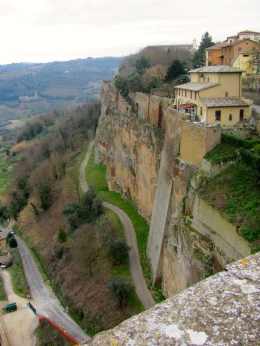 Before leaving the US, we planned as much of our trip as we could have. We found (but did not purchase) tickets in advance on
Before leaving the US, we planned as much of our trip as we could have. We found (but did not purchase) tickets in advance on 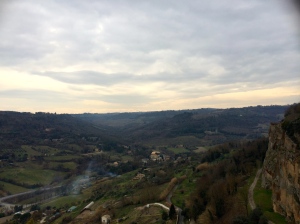 As was becoming our custom, we started our morning with an early breakfast at the hotel before catching the metro at our Spagna station to Termini. There, we caught the Trenitalia train to Orvieto. We purchased tickets at the automated machines at the station and validated them before getting on the train. The seats are assigned (unlike most Amtrak trains in the US). The car (carrozza) and seat (posto) are numbered and we were seated in car 4, seats 21 and 22. There is a conductor that comes around and makes sure that you are seated in your appropriate location and people can be sticklers about their seating locations. We were seated next to two older Italian women, which gave me a chance to practice my Italian and gave them an opportunity to speak English, which was so fun for me (my poor husband!).
As was becoming our custom, we started our morning with an early breakfast at the hotel before catching the metro at our Spagna station to Termini. There, we caught the Trenitalia train to Orvieto. We purchased tickets at the automated machines at the station and validated them before getting on the train. The seats are assigned (unlike most Amtrak trains in the US). The car (carrozza) and seat (posto) are numbered and we were seated in car 4, seats 21 and 22. There is a conductor that comes around and makes sure that you are seated in your appropriate location and people can be sticklers about their seating locations. We were seated next to two older Italian women, which gave me a chance to practice my Italian and gave them an opportunity to speak English, which was so fun for me (my poor husband!).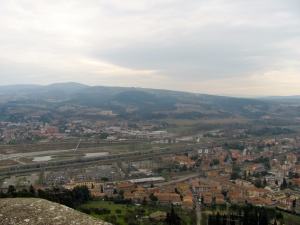
 We pulled into the Orvieto station and disembarked. The train station is at the bottom of a hill (mountain?) and there is a funicular (funicolare) that takes you to the top, where the actual town is. The funicular costs €1 per person each way (I think the ticket is valid for 90 minutes so technically one ticket can get you up and down if you don’t plan on spending much time in the town).
We pulled into the Orvieto station and disembarked. The train station is at the bottom of a hill (mountain?) and there is a funicular (funicolare) that takes you to the top, where the actual town is. The funicular costs €1 per person each way (I think the ticket is valid for 90 minutes so technically one ticket can get you up and down if you don’t plan on spending much time in the town).  The funicular is like a gondola ski lift/cable car that holds maybe 20 people and the ride lasts less than two minutes. Once we arrived at the top, we got out and walked around the fort and small park that is directly on your left when you exit the funicular station. The views from this fort are pretty incredible.
The funicular is like a gondola ski lift/cable car that holds maybe 20 people and the ride lasts less than two minutes. Once we arrived at the top, we got out and walked around the fort and small park that is directly on your left when you exit the funicular station. The views from this fort are pretty incredible.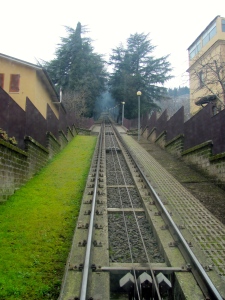
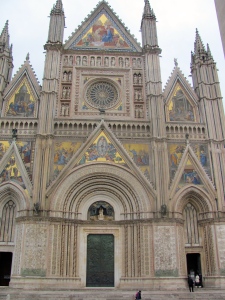
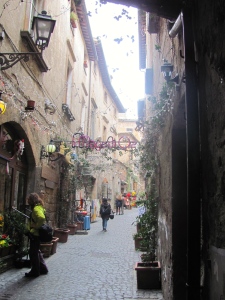
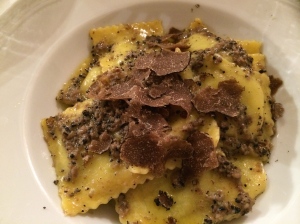
 We walked over to the Piazza del Popolo, where a market convenes every Saturday morning. Unfortunately, we caught the tail end, with vendors breaking down their stalls but we caught a glimpse of small(ish) town life in Italy. The vendors sold clothing (especially underwear!), fruits and vegetables, cheese, snacks, and household necessities like trash cans, paper goods, and cutlery. It is so easy for us to pop over to Target whenever we need anything and it really got me thinking of how it must be to have to plan for your weekly excursion to the local market and figure out what to do the remainder of the week. And Orvieto is a relatively large town with a bunch of shops but they seem to cater more towards tourists and visitors rather than the locals. After we left the market, we wandered around the streets a little bit more, then decided to head back to the train and catch a slightly earlier one than we had originally intended on getting since we were a little bored and it was a bit chilly and damp. One of the vendors that was set up by the funicular station was selling all kinds of candy, nuts, and roasted chestnuts. Every Thanksgiving and Christmas, my family roasts chestnuts (in the oven) so these are comfort food to me. I ended up buying a bag (maybe a half kilo, which is about a pound) and that was our snack for the train ride home to Rome.
We walked over to the Piazza del Popolo, where a market convenes every Saturday morning. Unfortunately, we caught the tail end, with vendors breaking down their stalls but we caught a glimpse of small(ish) town life in Italy. The vendors sold clothing (especially underwear!), fruits and vegetables, cheese, snacks, and household necessities like trash cans, paper goods, and cutlery. It is so easy for us to pop over to Target whenever we need anything and it really got me thinking of how it must be to have to plan for your weekly excursion to the local market and figure out what to do the remainder of the week. And Orvieto is a relatively large town with a bunch of shops but they seem to cater more towards tourists and visitors rather than the locals. After we left the market, we wandered around the streets a little bit more, then decided to head back to the train and catch a slightly earlier one than we had originally intended on getting since we were a little bored and it was a bit chilly and damp. One of the vendors that was set up by the funicular station was selling all kinds of candy, nuts, and roasted chestnuts. Every Thanksgiving and Christmas, my family roasts chestnuts (in the oven) so these are comfort food to me. I ended up buying a bag (maybe a half kilo, which is about a pound) and that was our snack for the train ride home to Rome.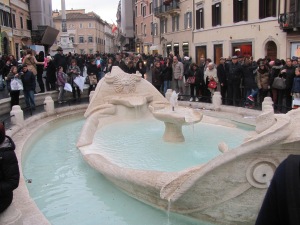
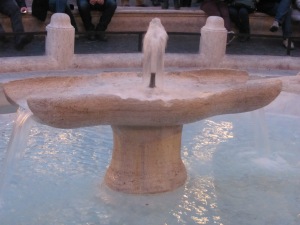

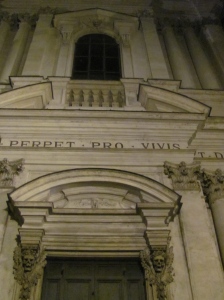
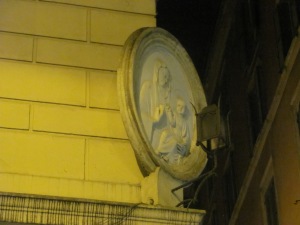
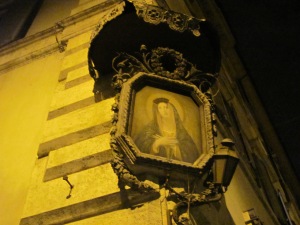 The theory is that criminals are deterred if they look up and see a mother figure (with the joke being that all Italian men, even criminals, are mamma‘s boys), particularly THE mother of all mothers (Mary–way to play on the Catholic guilt), that they would think twice about committing whatever crime they were about to do. According to our guide, after the institution of these Madonellas, the crime rate plummeted. I had seen them but hadn’t really paid much heed; after he pointed them out, I couldn’t stop seeing (and photographing) them! It began raining toward the end of our tour, which added ambiance to some of the chilling stories. The tour ended right in front of the Castel Sant’Angelo, down the road from the Vatican. Again, being one of my husband’s favorite places, we decided to see St. Peter’s at night and walked down towards the Vatican. With the rain letting up and the pavement glistening under the streetlights, the magic of St. Peter’s came alive.
The theory is that criminals are deterred if they look up and see a mother figure (with the joke being that all Italian men, even criminals, are mamma‘s boys), particularly THE mother of all mothers (Mary–way to play on the Catholic guilt), that they would think twice about committing whatever crime they were about to do. According to our guide, after the institution of these Madonellas, the crime rate plummeted. I had seen them but hadn’t really paid much heed; after he pointed them out, I couldn’t stop seeing (and photographing) them! It began raining toward the end of our tour, which added ambiance to some of the chilling stories. The tour ended right in front of the Castel Sant’Angelo, down the road from the Vatican. Again, being one of my husband’s favorite places, we decided to see St. Peter’s at night and walked down towards the Vatican. With the rain letting up and the pavement glistening under the streetlights, the magic of St. Peter’s came alive.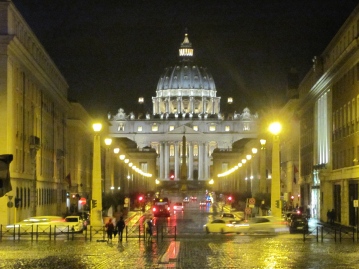 We had decided to go to dinner in a new neighborhood that we hadn’t explored, Prati. We found a restaurant called
We had decided to go to dinner in a new neighborhood that we hadn’t explored, Prati. We found a restaurant called 







 On the way up, we took brief breaks to take in the view as we escalated the dome, and on the way down, we stopped at the gift shop around the mid-way point (there is also a cafe and restrooms) to purchase some rosary beads and other gifts for our family and friends.
On the way up, we took brief breaks to take in the view as we escalated the dome, and on the way down, we stopped at the gift shop around the mid-way point (there is also a cafe and restrooms) to purchase some rosary beads and other gifts for our family and friends.  After we got back down to earth, we went into St. Peter’s Basilica and toured around again. The enormity of the basilica is breathtaking, regardless of how many times one visits.
After we got back down to earth, we went into St. Peter’s Basilica and toured around again. The enormity of the basilica is breathtaking, regardless of how many times one visits.




 The person in front of us had asked so I listened while the choices were explained. The guys behind the counter were speaking French, Italian and English, so my head was spinning with trying to translate everything but we ended up being happy with our picks: broccoli/spinach/zucchini flower, mushroom, mortedella/arugula/tomato, and spinach/goat cheese.
The person in front of us had asked so I listened while the choices were explained. The guys behind the counter were speaking French, Italian and English, so my head was spinning with trying to translate everything but we ended up being happy with our picks: broccoli/spinach/zucchini flower, mushroom, mortedella/arugula/tomato, and spinach/goat cheese.







 We purchased a few gifts for colleagues and friends, with the proceeds all going towards the rescue efforts. After getting our cat fix, we headed back upstairs to street level.
We purchased a few gifts for colleagues and friends, with the proceeds all going towards the rescue efforts. After getting our cat fix, we headed back upstairs to street level.




 We were able to find the main road (via Garibaldi) and continued to the Passegiata del Gianicolo.
We were able to find the main road (via Garibaldi) and continued to the Passegiata del Gianicolo.





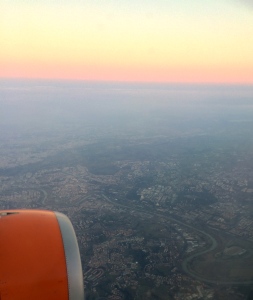
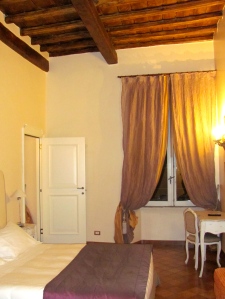
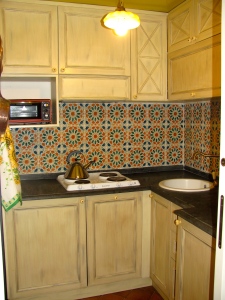

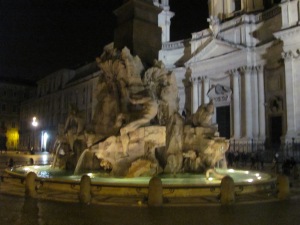
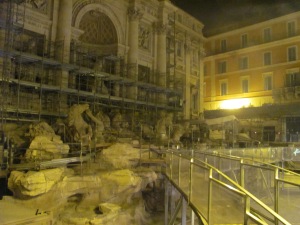
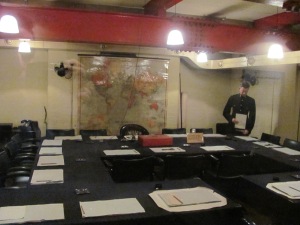




 us, we only had a half-pint each to try to pace ourselves. Some of the older men on the tour knocked back a full pint in half the time it took me to drink my half-pint and out-drank me by at least double. It was awesome.
us, we only had a half-pint each to try to pace ourselves. Some of the older men on the tour knocked back a full pint in half the time it took me to drink my half-pint and out-drank me by at least double. It was awesome.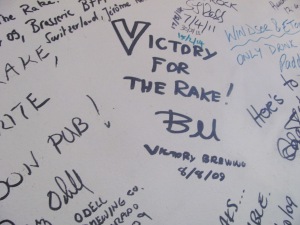
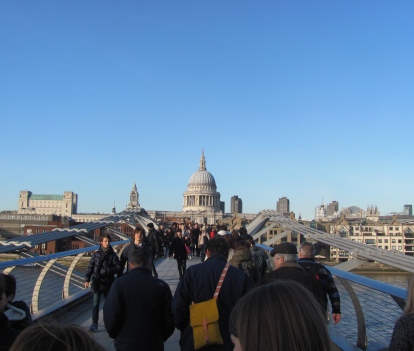
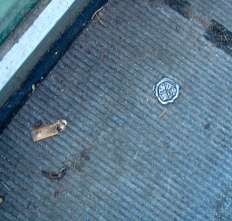
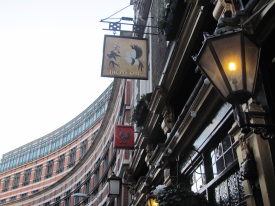
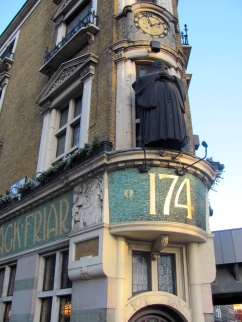

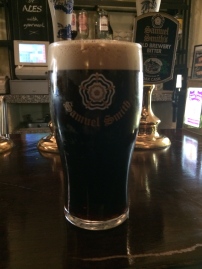
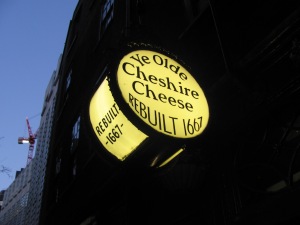 This pub is located on Fleet Street (the Broadway aficionado inside me was intrigued yet a little scared..Sweeney Todd, anyone?) and there has been a pub standing in this location since the 1500s. The pub was rebuilt after the Great Fire of 1666 and you can feel the history as you enter the pub and descend the stairs to a dark basement bar.
This pub is located on Fleet Street (the Broadway aficionado inside me was intrigued yet a little scared..Sweeney Todd, anyone?) and there has been a pub standing in this location since the 1500s. The pub was rebuilt after the Great Fire of 1666 and you can feel the history as you enter the pub and descend the stairs to a dark basement bar. 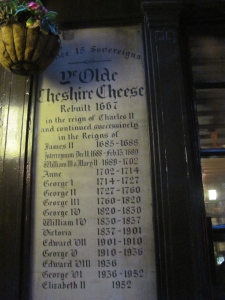
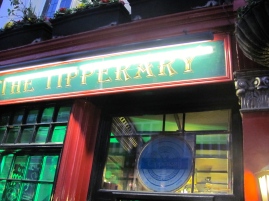 We crossed Fleet Street and found ourselves at another old bar called The Tipperary. This is the oldest Irish pub in London and survived the Great Fire due to its stone structure. The Tipperary was still relatively empty but as we emptied out of the bar, we started to notice the sun going down and more people gathering on the streets and in pubs as the workday was nearing an end. We peeked into the
We crossed Fleet Street and found ourselves at another old bar called The Tipperary. This is the oldest Irish pub in London and survived the Great Fire due to its stone structure. The Tipperary was still relatively empty but as we emptied out of the bar, we started to notice the sun going down and more people gathering on the streets and in pubs as the workday was nearing an end. We peeked into the  The Seven Stars was next on the docket and was beginning to fill up with after-work revelers when we arrived. Apparently, there is a resident cat (as was evidenced by bowls of cat food and photographs of the cat behind the bar) but we did not ever see it, which was a bummer. It was starting to get so crowded that George and a few of the other tour members headed outside until those drinking downed their pints and we could move on.
The Seven Stars was next on the docket and was beginning to fill up with after-work revelers when we arrived. Apparently, there is a resident cat (as was evidenced by bowls of cat food and photographs of the cat behind the bar) but we did not ever see it, which was a bummer. It was starting to get so crowded that George and a few of the other tour members headed outside until those drinking downed their pints and we could move on.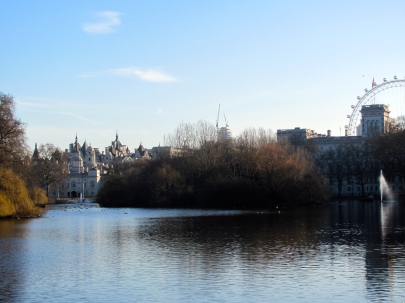

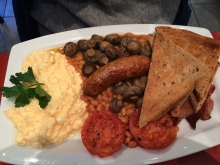
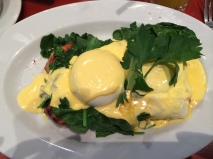
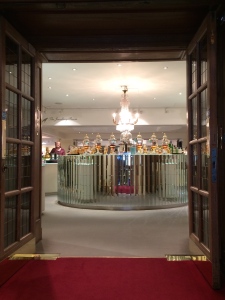
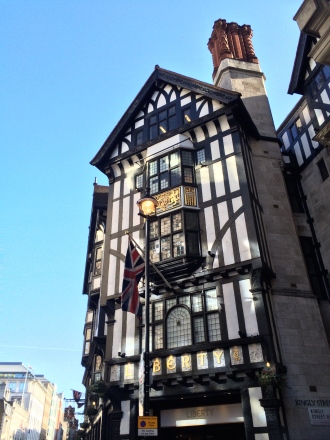
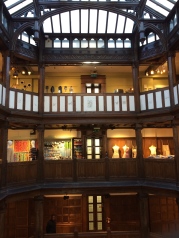 The store is famous for its unique fabric prints, which have been parlayed into collaborations with companies such as
The store is famous for its unique fabric prints, which have been parlayed into collaborations with companies such as 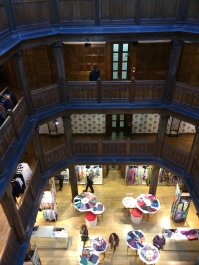 and paneling inside. They also have a nice yarn department and I purchased some knitting needles, as I am an avid knitter and they were really nice needles for a relatively reasonable price (£5). I also ended up buying a gift for my sister-in-law, who loves Liberty patterns.
and paneling inside. They also have a nice yarn department and I purchased some knitting needles, as I am an avid knitter and they were really nice needles for a relatively reasonable price (£5). I also ended up buying a gift for my sister-in-law, who loves Liberty patterns.
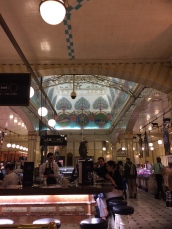

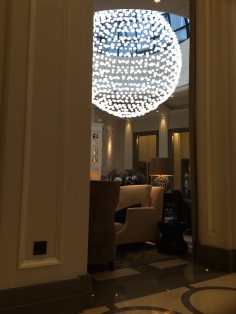
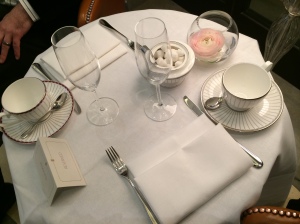
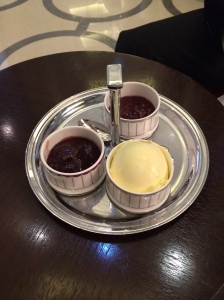
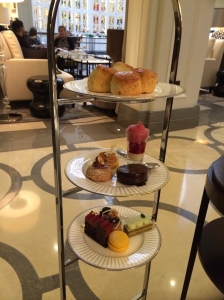
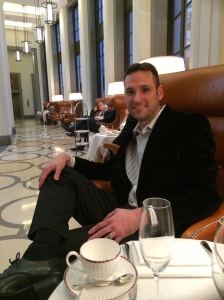

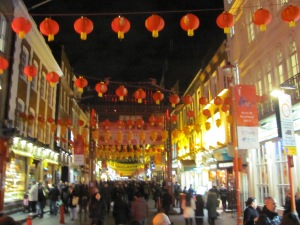
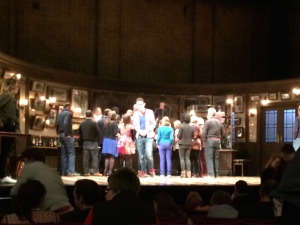
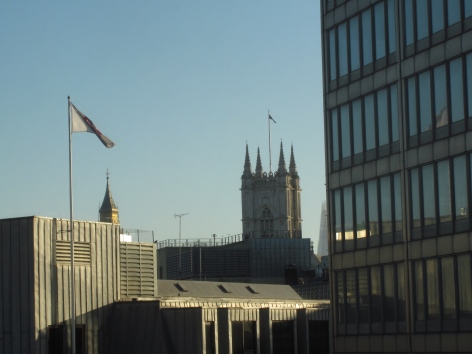
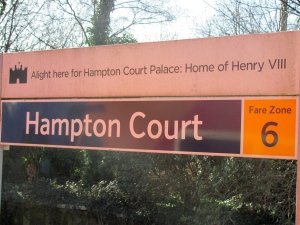 We took the tube from Westminster to Waterloo, then caught the
We took the tube from Westminster to Waterloo, then caught the 